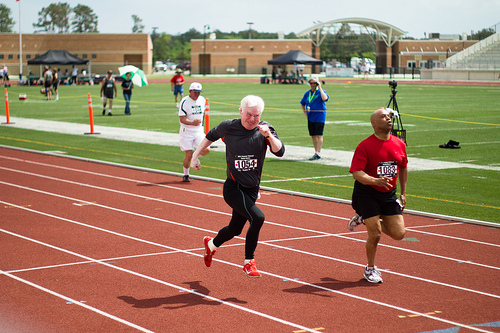By Kenneth Muir (Contributor) – Email
Print Edition: May 9, 2012
Finding the right sport for you can be a tumultuous process, especially as a young adult. Many an athlete first joined their sport as a child, simply because the current of their life happened to push in that direction. A chance field trip to the local gymnasium, for example. Joining a soccer team through the insistence of a well-meaning parent, and so on. If the proverbial glove fits, that child may never leave their first sport. Young adults interested in getting into a sport have more power in guiding their own destiny, but this enthusiasm can be complicated by the sheer number of different sports available.
The Summer Olympics alone house 27 different sports. If you are thinking about getting into a sport as summer approaches, you won’t be left wanting for choice. Though in a previous article I laid out some example sports that may interest a reader based on their fitness goals, in this issue I’ll go further and categorize some sports that rely on different energy systems.
Energy systems are pathways your body uses to release energy. Which pathway gets used most depends on the intensity of the movement and its duration of time. Though every energy system is used simultaneously, most sports more heavily rely on a specific energy system, and can be categorized as such. And you can very well make a choice on which sport most suits you based on its energy system: in Top Gear’s interview with Usain Bolt, the world record holder and gold medalist from the 2008 Beijing Games in the 100m dash, Bolt commented that he switched to the 100m from the 400m because “the training was too hard [for the 400m]. The training was really intense. You get something called lactic acid.” He opted for a sport that doesn’t produce lactic acid and instead uses the following energy system:
The (Alactic) Anaerobic System
Anaerobic means “not aerobic.” Aerobic, of course, means “uses oxygen.” Therefore, anaerobic means “does not use oxygen.” Alactic means “does not produce lactic acid.” Alactic exercise occurs within the first 10 seconds or so of movement, and allows for an extremely fast release of energy. This energy pathway is often described as one responsible for “explosive” movements. It functions through the use of stored adenosine triphosphate (ATP, the energy molecule), and phosphocreatine. As expected, sports that depend on explosive movements also depend on this energy system. If three-rep max bench press is your favourite exercise in the weight room, then the following sports may be for you.
• Weightlifting
• Wrestling
• Tae-kwon-do
• Golf
• Short-distance running (such as the 100m dash)
• Baseball
• Judo
The (Lactic) Anaerobic System
Lactic exercise uses glycogen (sugar) stored in the muscle cells to generate energy. Though the energy release is slower than in alactic exercise, meaning explosive movements are less possible, the energy system can last much longer. As I discussed in a previous article, your glycogen stores can last up to two hours with appropriate conditioning, at which point you “hit the wall.” When the body demands more energy than this process can normally supply through the use of oxygen, lactic acid is formed as a byproduct of the low-oxygen environment. Your body can continue to function this way without oxygen for approximately 60-120 seconds before it gives way to the aerobic system. A large majority of sports rely on the lactic anaerobic system:
• Most team sports (basketball, hockey, etc.)
• Sprint Canoe/Kayak
• Boxing
• Handball
• Middle-distance running (such as 800m)
• Table Tennis
• Swimming
The Aerobic System
This is your body’s go to energy system when other alternatives are either unnecessary or have been exhausted. This system uses glycogen stored in the muscle, as well as fat to release energy. The breakdown of fat into energy is a comparably slow process, but the upside is that fat is a nearly unlimited resource in the body, and it—as well as glycogen—will continue to produce energy as long as there’s enough oxygen present. This system is therefore most relied upon in lower intensity activities that last for a very long time period.
• Marathon Running
• Long-distance Cycling
• Biathlon
• Modern Pentathlon
• Triathlon
Now that you’re educated, you should be able to make a more reasoned choice of which sports most appeal to you, so get out there and do it, while we still have this occasionally sunny weather.


